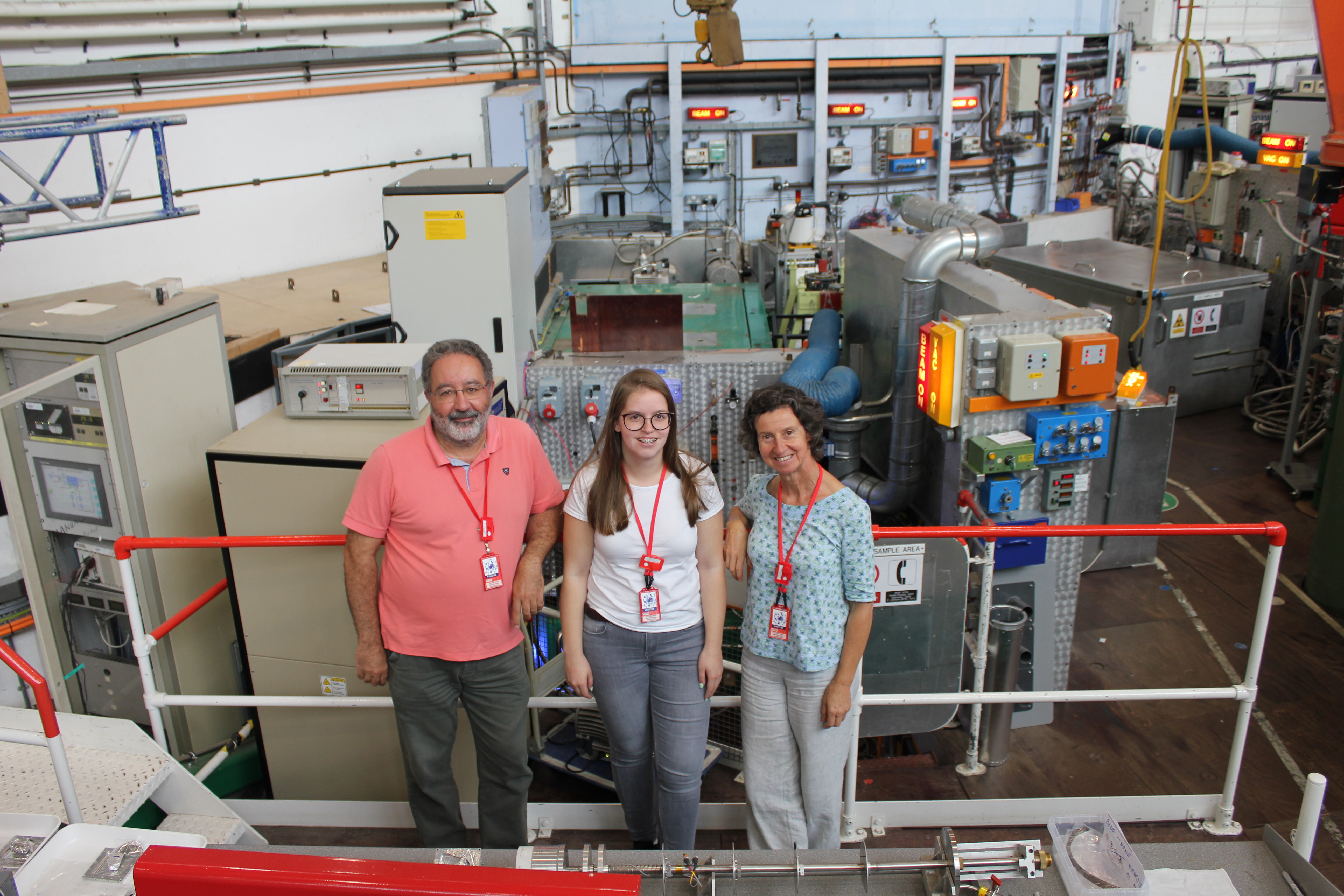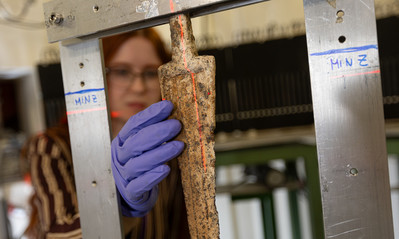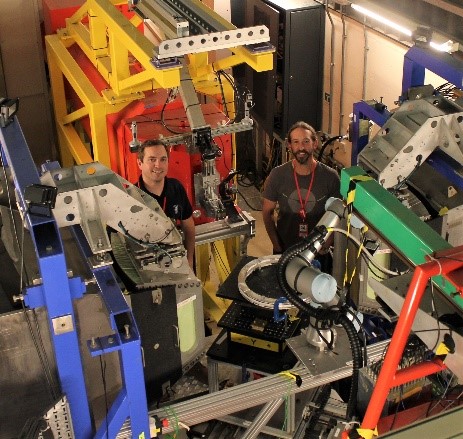The Case of the Missing Neutrinos
PhD student Nahid Bhuiyan came to ISIS to investigate the interactions between neutrons and water… It all starts on the other side of the globe under a mountain, in a cylindrical tank filled with 50 kilotons of ultrapure water. This is Super-K and it’s one job is to detect neutrinos. These tiny fundamental particles are capable of passing through the universe almost entirely unperturbed, meaning many of those created from the Big Bang are still propagating through the universe today! In the rare cases where neutrino do interact, they produce a variety of particles. Super-K can detect these particles through the photons they produce as they propagate through the water. One of the ways this occurs is when neutrons produce detectable photons upon being captured by the water molecules. However, there are discrepancies between the number of neutrons detected and the simulations of what they expect to occur.
Using ChipIR, several small tanks of water and various activation foils, Nahid’s project aims to study neutron-water cross sections which will help researchers understand why Super-K is seeing less neutrons than predicted.
Examining the chemical and structural changes to bones from cancer could help with future treatments

Another research group specialising in cancer research came to ISIS this cycle from Portugal, however their other research interest is bones… Metastasis is a type of cancer where a secondary tumour appears in a new place in the body. One symptom that often comes from metastasis is fragile bones, as they become full of cavities and cracks. Dr Maria Paula and her team hope to uncover the chemical and structural changes associated with bones during metastasis to metastatic lesions and so help with future treatments and pain relief. The team performed EXAFS (an X-Ray Absorption Spectroscopy technique) at the Diamond Light Source and on two different neutron spectrometry instruments here at ISIS, MAPS and TOSCA. This allowed the team to combine the low frequency data provided by TOSCA with high sensitivity with that at high frequency from MAPs, which together will build a full picture of the analysed samples.
Is the standard model to measure the proton wrong?

The proton was discovered over 100 years ago in 1919 by Professor Ernest Rutherford but recently we have started to realise that our measurements of its size could be inaccurate. Typically, we measure the radius of a proton using electrons. However, recently researchers have tried using muons instead with unexpected results. To investigate further, this international team of collaborators came to the ISIS muon beam this cycle to investigate this further. Equipped with specialist lasers, detector, and plenty of goggles with our instrument MuX, this team strive to uncover if the standard model is wrong…
Using hydrogels as a new drug delivery system could save many lives in the treatment of breast cancer
Whilst standard cancer treatments work well, there are so many side effects that can negatively impact the patient’s life. Dr Naved Malek and his team at Sardar Vallabhbhai National Institute of Technology (SVNIT) India, hope to develop a new type of drug delivery system for treating breast cancer, focussing on how they can improve medicines to directly target cancerous cells.
Their research centres on ionic liquids, which they engineer for different applications. Dr Malek and his team wished to find out about the structures of a drug when it is incorporated within the ionic gel they had made, and then how it transports through the skin. Using SANS2D, ISIS instrument scientists Dr Najet Mahmoudi and Dr James Doutch assisted Dr Malek to discover exactly which concentration is needed for the hydrogel to form, if it is then forming, and if so, what structures were present within the hydrogel. By directly encountering cancerous cells, the treatment would prevent damage to unaffected cells and save many lives. Rather than being directly administered via injection, this would be a gel to rub onto the skin to penetrate within in a technique called hydrogel based transdermal delivery.
Uncovering the manufacturing techniques of 3000-year-old swords

Alex Rodzinka, a PhD student jointly funded by ISIS and Cranfield University, is studying the technological transition from Bronze Age to Iron Age in Iran. Having used ISIS instruments IMAT and INES, Alex is applying neutron techniques to uncover the changes in manufacturing techniques of ancient swords. She can re-discover these ancient manufacturing methods, including the alloys used, evidence of intentional carburisation and even if they have been modified or repaired in modern times.
In their latest analysis, Alex and INES beamline scientist and supervisor Antonella Scherillo investigated an assemblage of 3000-year-old iron swords from northwestern Iran, intrigued to see the development of the early smithing process.
Combating stresses and strains in gas turbine engines

A collaborating Rolls Royce and Stress Space R&D team visited our Engin-X instrument to study stresses and strains in an inertia friction welded alloy assembly, which is used in gas turbine engines. Their sample at ISIS is being measured by four techniques in order to cross compare results with computational models and assure the safety of advanced welded joints. Rolls Royce is contributing this case to the EU Horizon 2020 EASI-STRESS project, which is focussed around the standardisation of residual stresses using X-ray and neutron technologies.
Alongside this, Stress Space investigated the feasibility of measuring surface residual stresses in the friction welded component by X-ray diffraction at the same time as bulk residual measurements using neutron diffraction.
